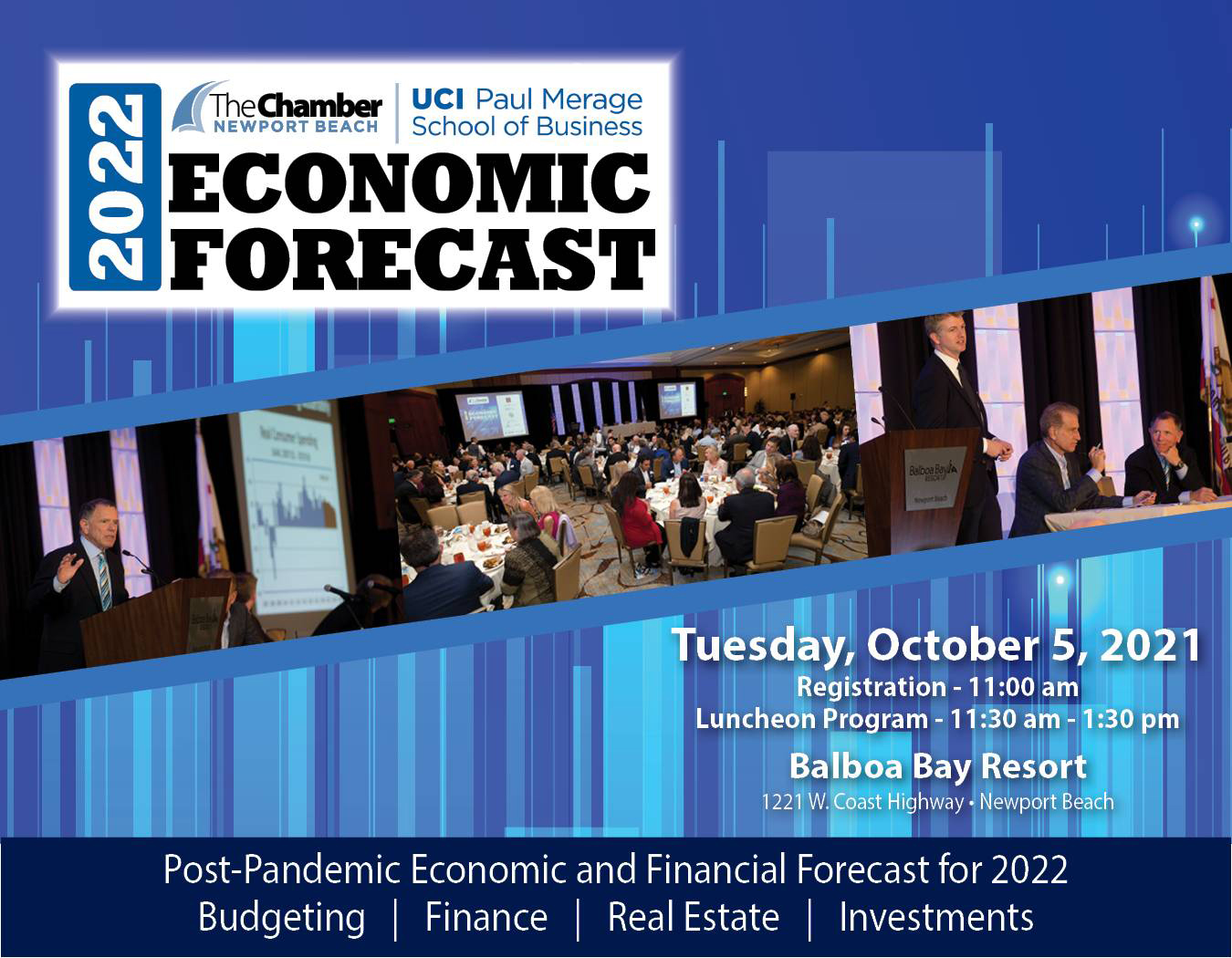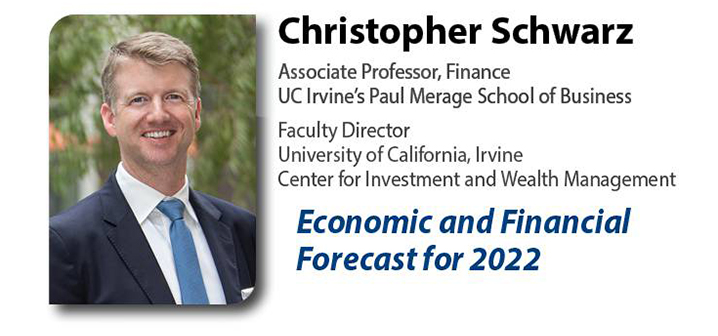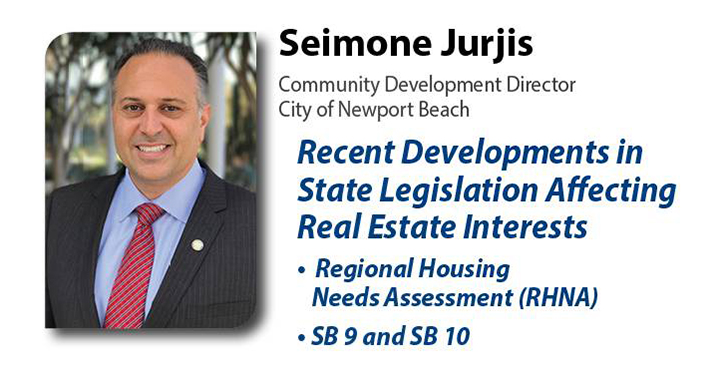The Newport Beach Chamber of Commerce presented its Signature Annual Event, the 2021 Economic Forecast, at The Balboa Bay Resort on Tuesday, October 5, to a sold-out ballroom full of members of the business community eager for information about the post-pandemic economy.
Many VIP’s were in attendance including Mayor Brad Avery, Council Members Diane Dixon and Joy Brenner, as well as former Mayors Keith Curry and Rush Hill, former Council Members Leslie Daigle, Jeff Herdman, and Tony Petros, and Fire Chief Jeff Boyles.
Steve Rosansky, Chamber President & CEO, as well as a former Newport Beach Mayor, set the tone of the presentation by describing the past financial year with a quote from Charles Dickens’ “A Tale of Two Cities.”
“It was the best of times, it was the worst of times,” read Rosansky. “It was the age of wisdom, it was the age of foolishness, it was the epoch of belief, it was the epoch of incredulity…”
Featured speaker Christopher Schwarz holds two positions at the University of California, Irvine: Associate Professor of Finance at the Paul Merage School of Business as well as Faculty Director of the Center for Investment and Wealth Management.
Rosansky quipped from the podium to Paul Merage Business School Dean Ian Williamson that given Schwarz holds two positions, should he not be receiving two paychecks?
Schwarz got right down to business, partly entertaining with humorous movie videos and quotes, partly dire in his narrative, yet somehow reassuring in his conclusions.
He outlined an economy currently in good shape but spoke with caution about 2022 and beyond.
Schwarz indicated the Federal Reserve predicts the 2022 economy will grow at 3.8 percent. He graded that forecast as overly optimistic, noting the economy has already shown third quarter slowing, to about 3.2 percent, and he predicts a continuing downward trend.
Schwarz bases much of his reasoning on supply vs. demand dynamics. Traditionally, our economy focuses on demand, however today we have an unprecedented supply problem—supply of almost everything including housing, cars, computer chips, and shortages due to COVID-19 related shutdowns in overseas countries and to supply chain disruptions.
Layer on top the issues of changes in the workforce, growing inflation and high rents and home prices, and the result is a perfect storm that could last for several years to come.
How do we fix the problem?
Schwarz predicts it will self-correct as production catches up with demand, but that takes time. “Time to build more infrastructure, factories, houses, cargo ships and the like. The interesting thing is we will likely realize an overproduction as an increasing amount of ‘producers’ race to capitalize on the shortages.”
Schwarz concluded 2021 will be a good year for the economy but expects a gradual diminishment into 2022 and beyond.
Newport Beach Community Development Director Simone Jurjis wrapped up the presentation with a discussion of the California’s Regional Housing Needs Allocation (RHNA) and Senate Bills 9 and 10.
Jurjis, like Schwarz, quoted some sobering statistics. Only 17 percent of families in Orange County can afford to purchase a home. California overall has a 3.5 million housing unit shortage. Skyrocketing rents don’t help.
Jurjis described Sacramento as “the casino owner gambling in its own casino putting all the chips on housing.”
Starting in 2022, RHNA mandates planning for over 180,000 additional Orange County dwelling units including 4845 units for Newport Beach. This includes requirements for very low, low, moderate, and above moderate housing units in every municipality.
Keep in mind cities only need to plan for their RHNA allocations with zoning and property laws; it is private landowners who are counted on to build the units.
All that housing requires more infrastructure: police, fire, medical, roads, utilities, schools, libraries, retail and more.
According to Jurjis “That amount of housing and infrastructure in Newport Beach is not something the City Council wants, or what the Council believes the residents want, however the mandate comes from the state.”
Jurjis went on to discuss recently enacted Senate Bills 9 and 10.
Under SB 9, a single-family zoned lot can be subdivided into two lots. On each lot a duplex can be built. And for each duplex an accessory dwelling unit (sometimes called a “granny flat”) as well as a junior accessory dwelling unit can be added, with the potential result of eight housing units on a previously zoned single family residential lot.
Parking is ordinarily required to support each housing unit, but SB 9 does not require parking if the dwelling units are within one-half mile of a transit corridor, which translates to a bus stop.
“Single family zoning is gone” concluded Jurgis.
SB 10 allows for a ten-unit apartment building on a single-family lot, if allowed by City ordinance. Since Newport Beach does not have such an ordinance nor is one on the foreseeable horizon, according to Jurgis SB 10 likely shouldn’t impact Newport Beach.
Interesting to note SB 9 and 10 do not require affordable units like those found in the RHNA measure.
For more information on the Newport Beach Chamber of Commerce and upcoming events, visit www.NewportBeach.com.







